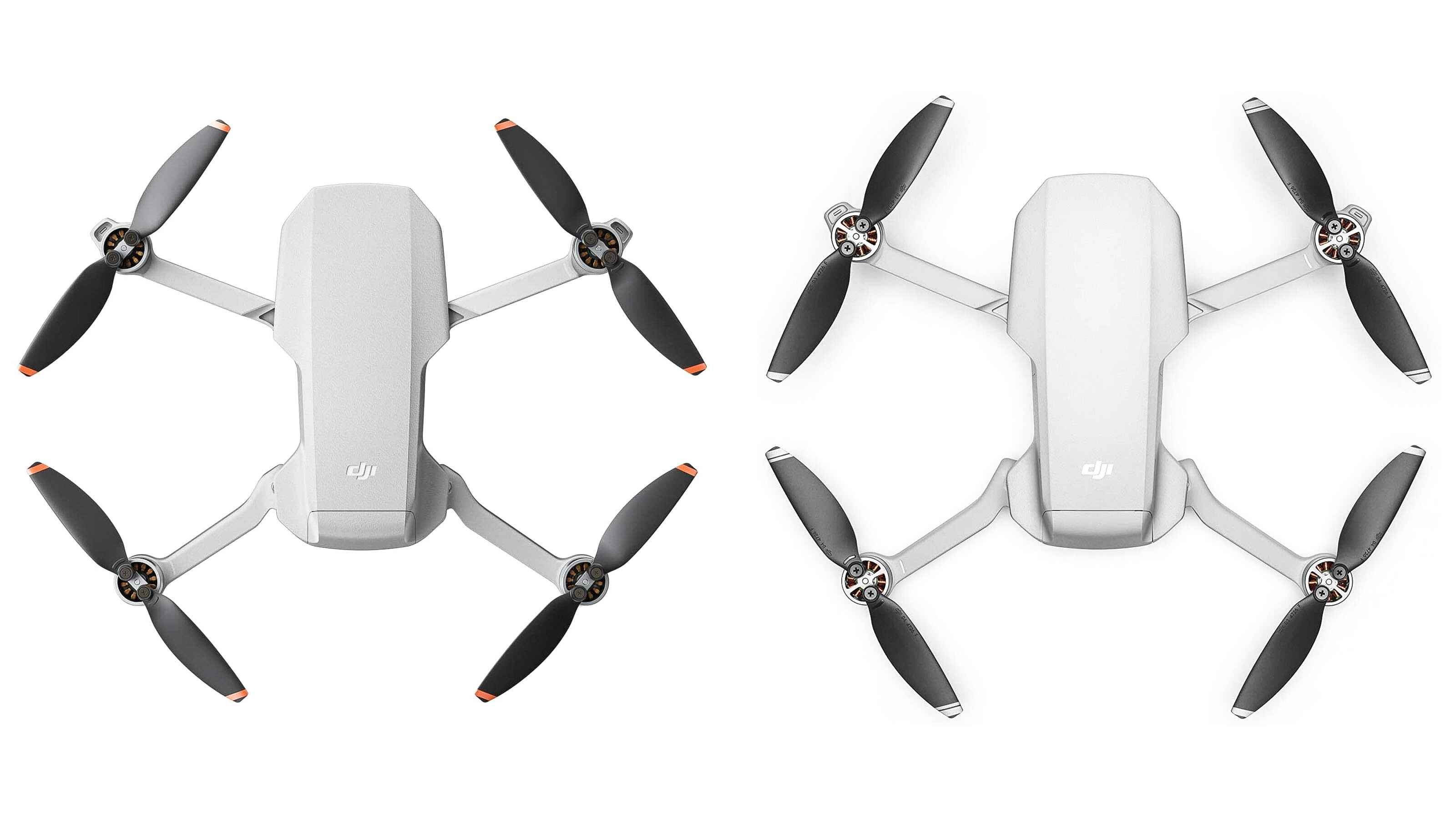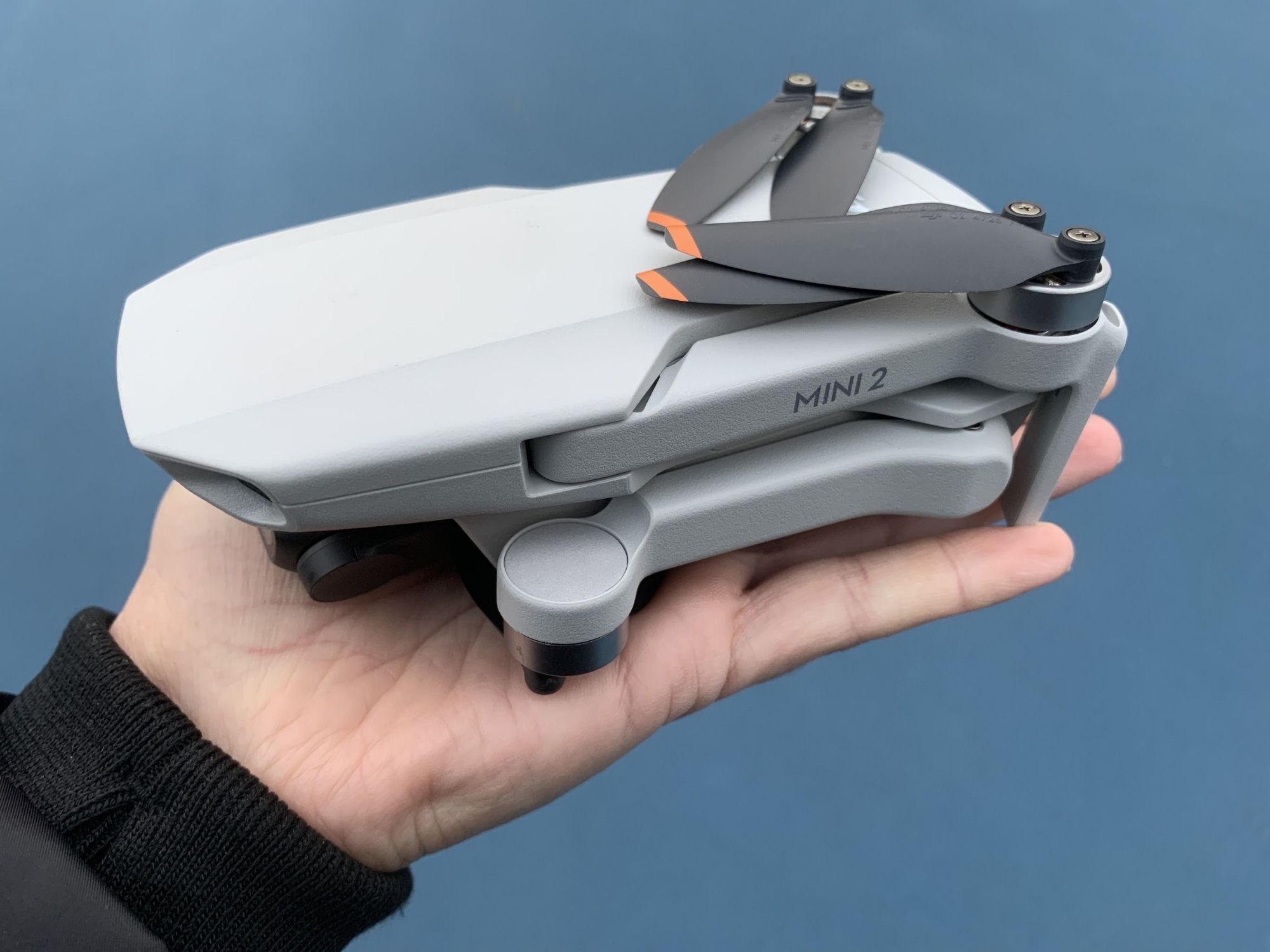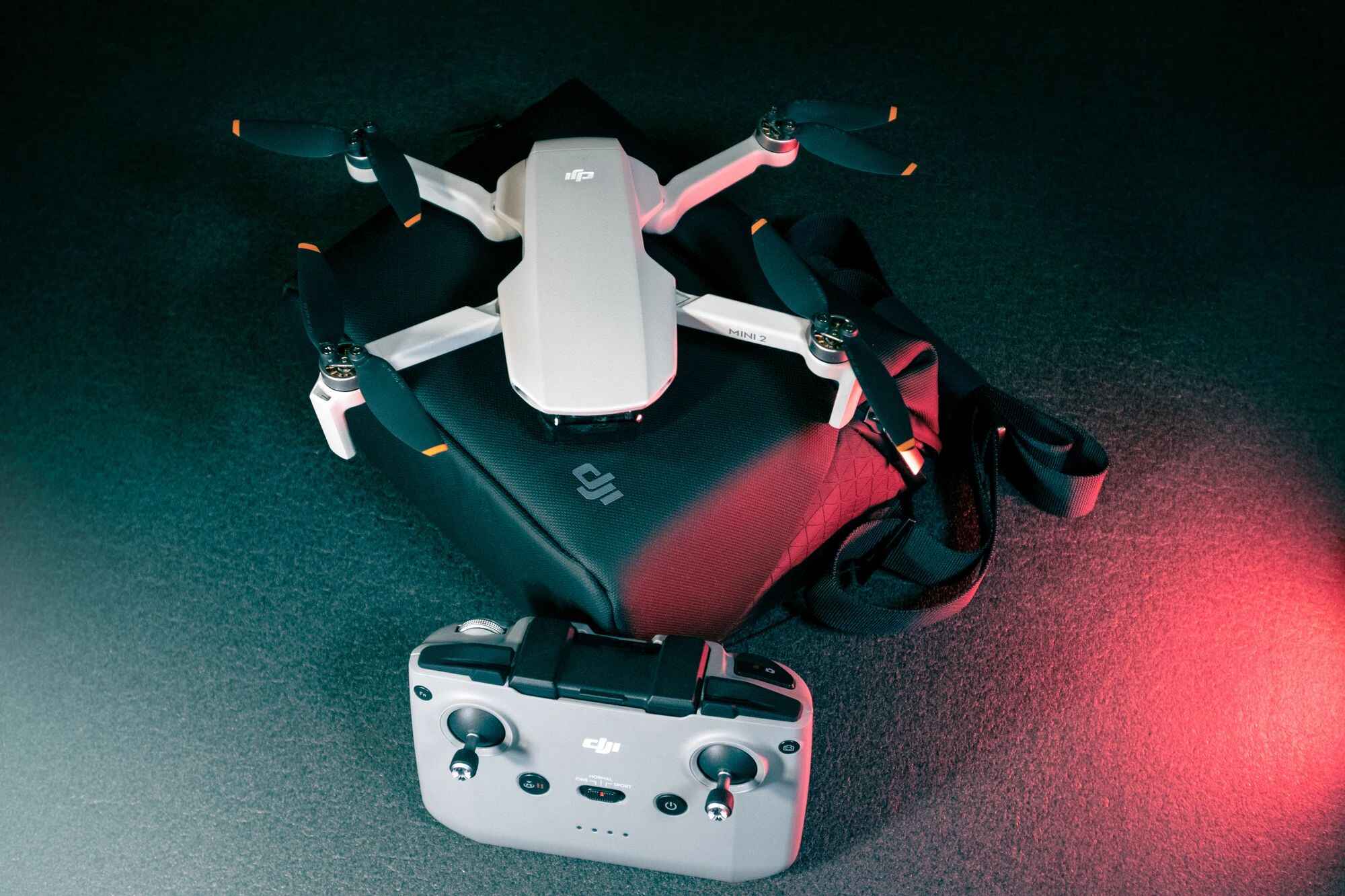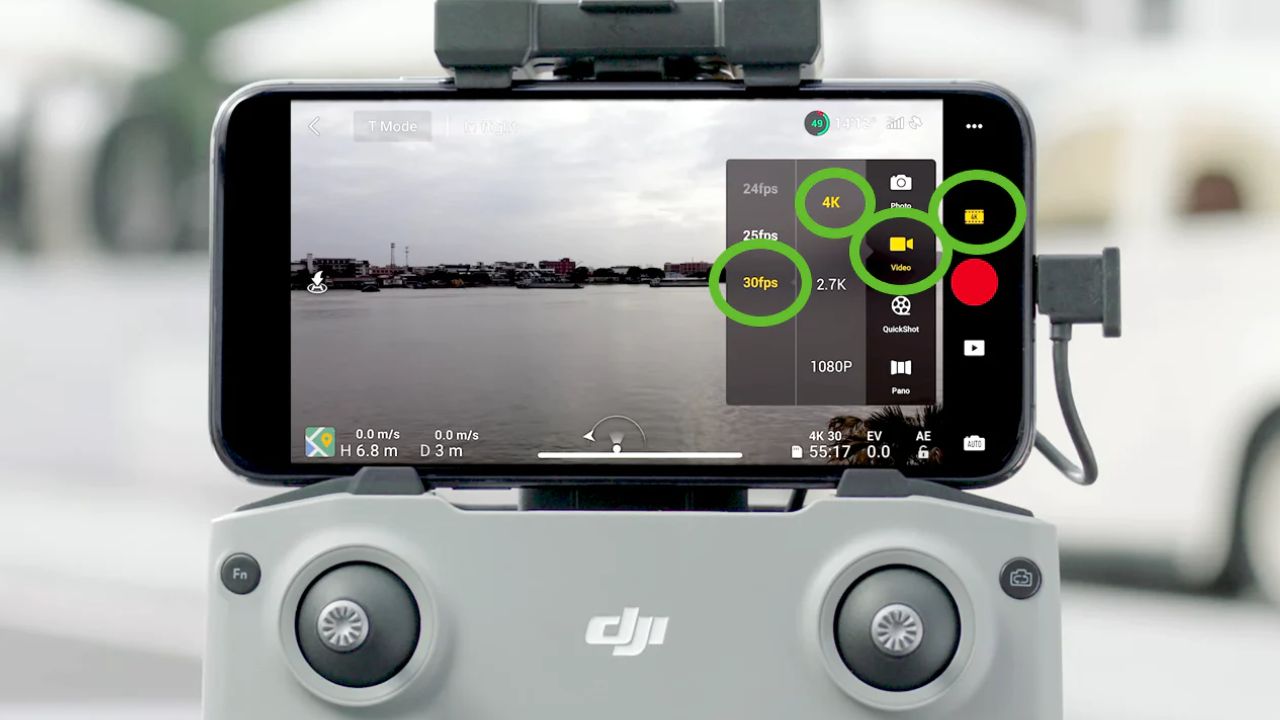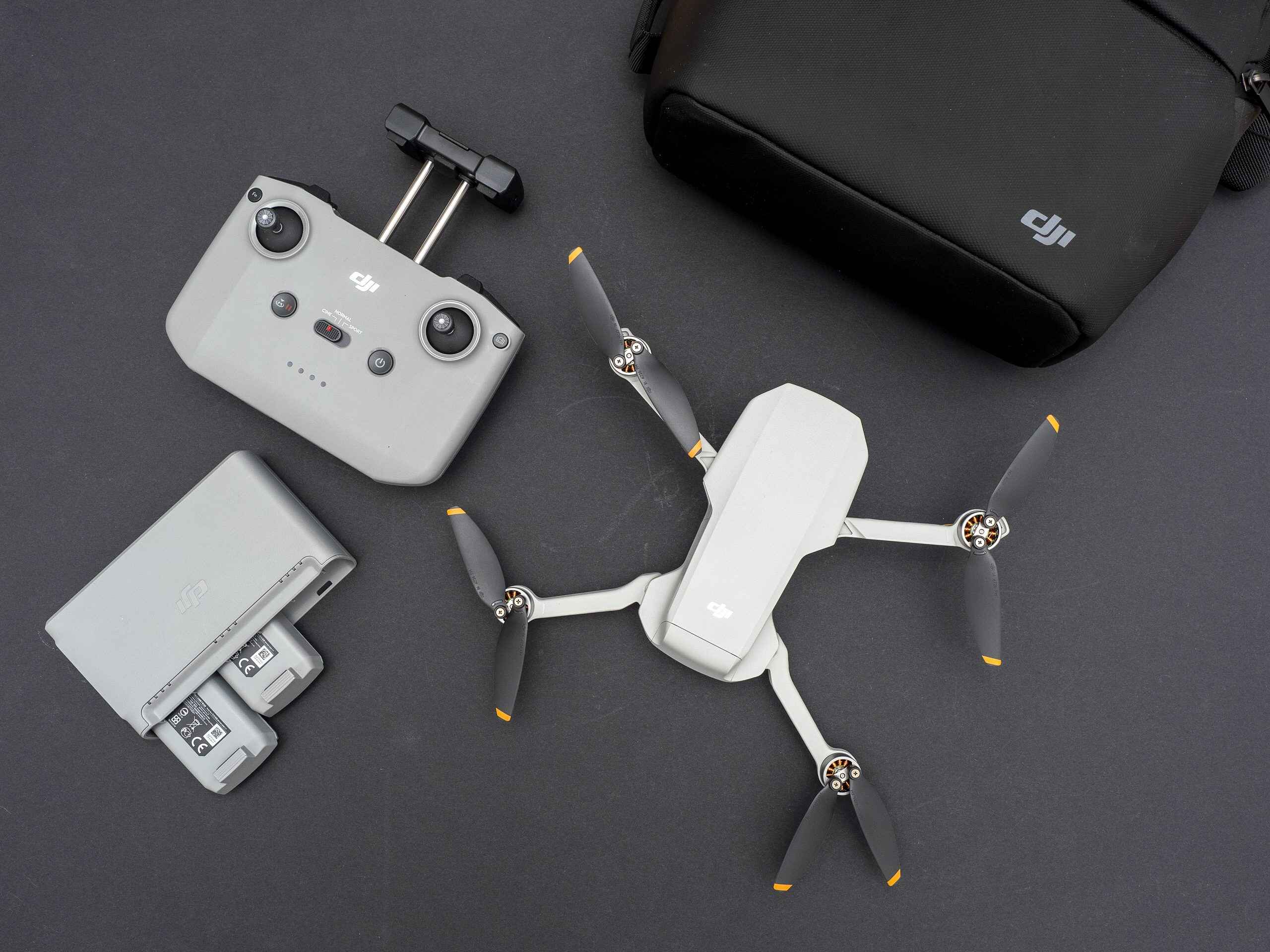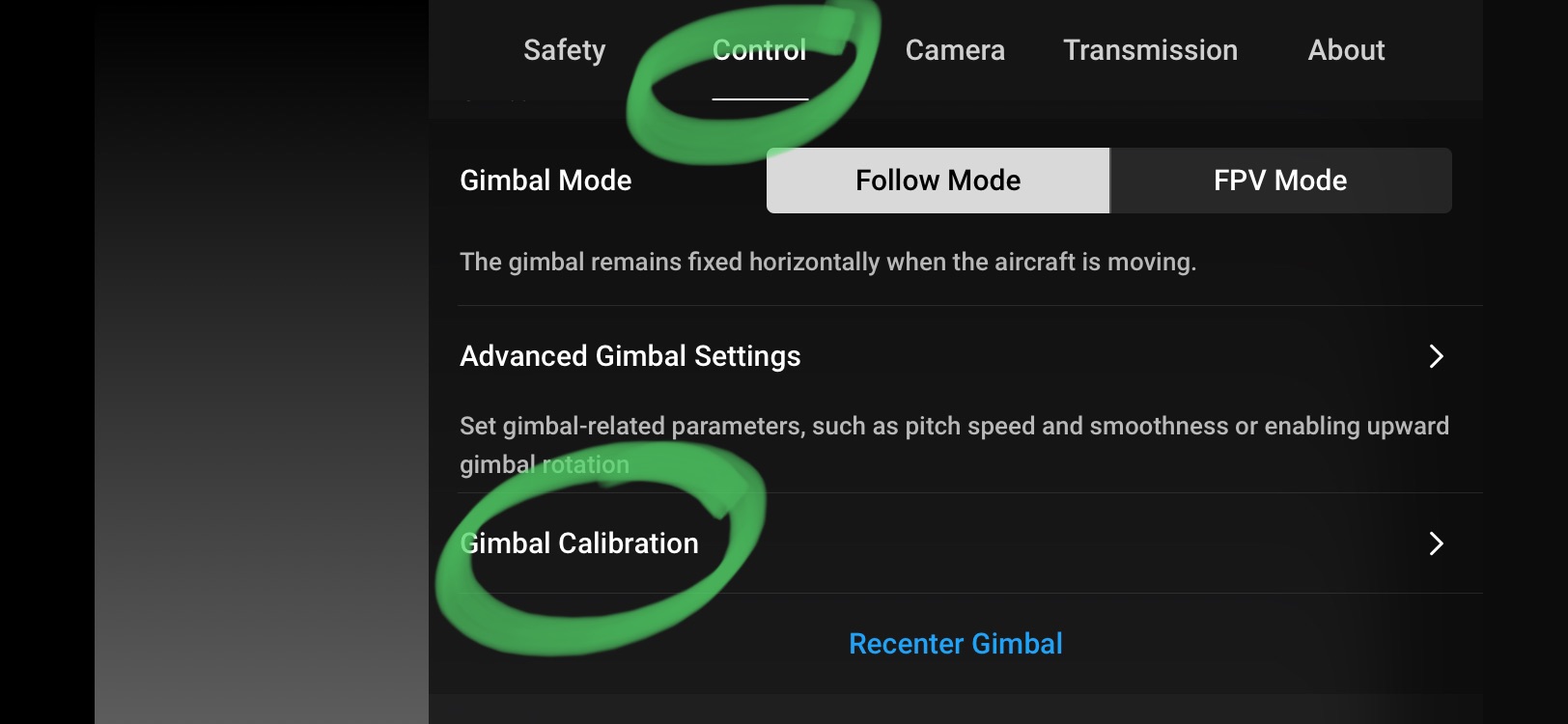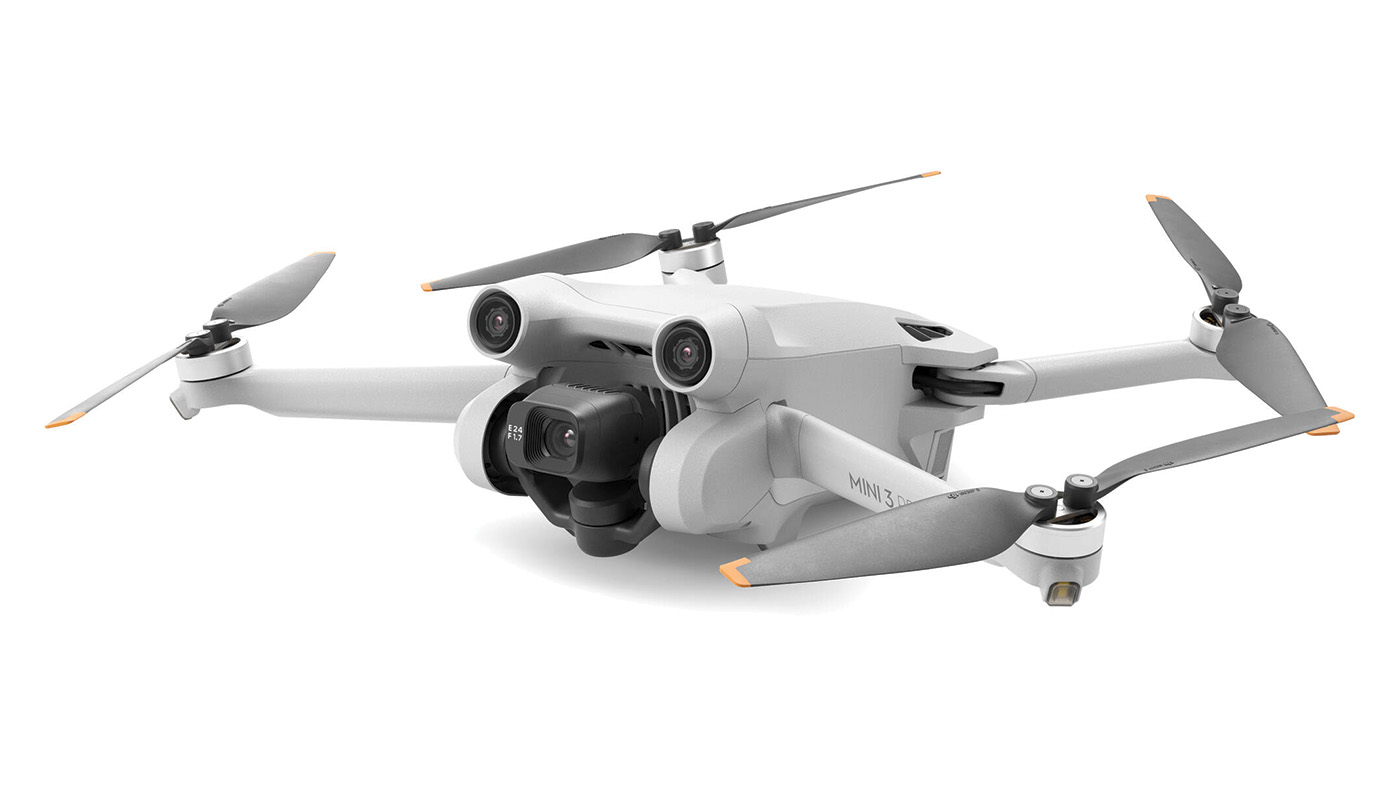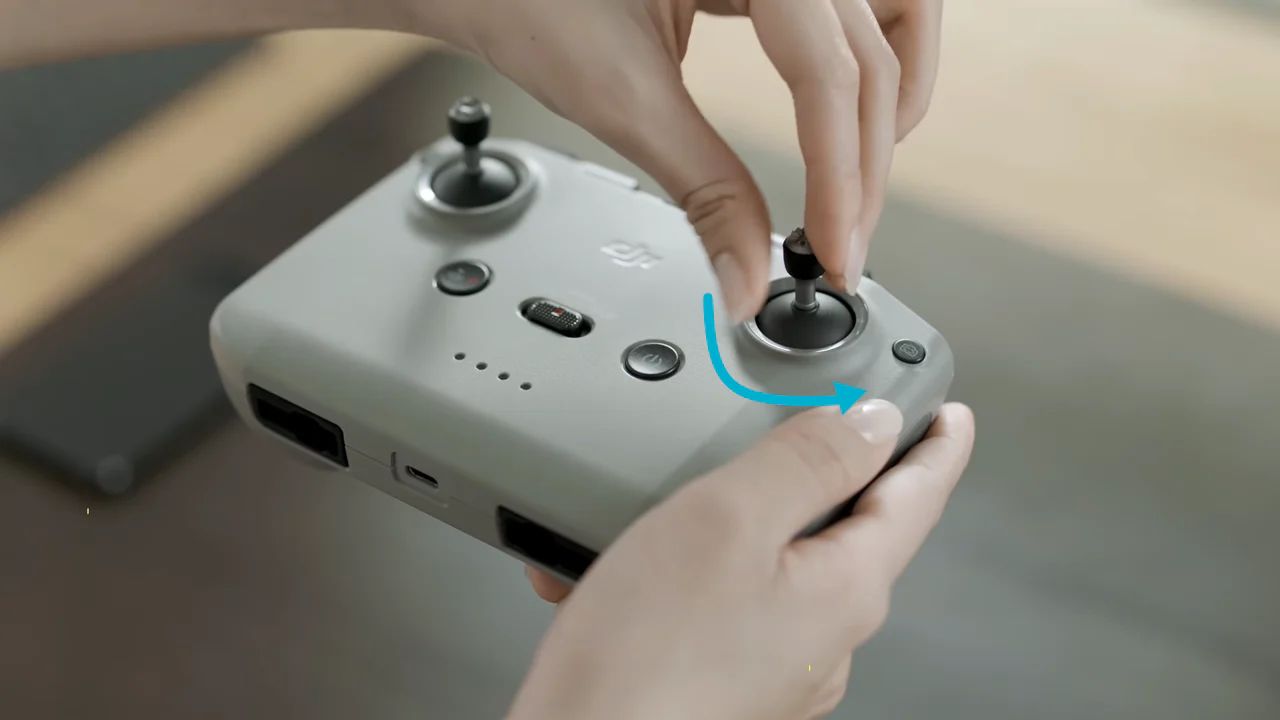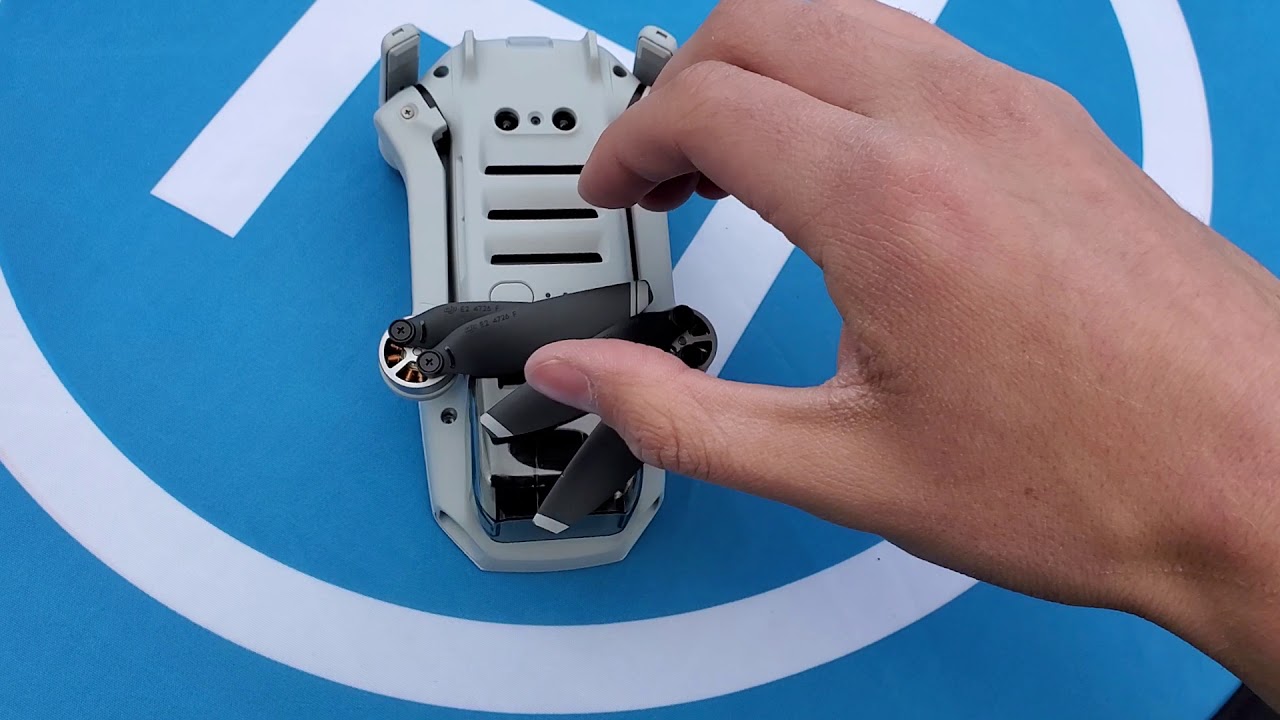Introduction
When it comes to aerial photography and videography, DJI has long been a leading brand, offering a range of drones to suit different needs and budgets. Two popular models in their lineup are the DJI Mini and the DJI Mini 2. While these drones may appear similar at first glance, there are some key differences between them that can impact your decision when choosing which one to buy.
The DJI Mini and DJI Mini 2 are both small and lightweight drones, making them ideal for travel and outdoor adventures. They are designed to be compact and portable, allowing you to easily carry them in your backpack or pocket. Despite their compact size, they boast impressive capabilities and features that are sure to delight drone enthusiasts and photographers alike.
In this article, we will compare the DJI Mini and the DJI Mini 2 to help you understand the differences between these two models, so you can make an informed decision based on your specific needs and preferences.
Size and Weight
One of the primary differences between the DJI Mini and the DJI Mini 2 is their size and weight. The original DJI Mini measures a compact 140x82x57mm and weighs just 249 grams. This lightweight design not only makes it incredibly portable but also allows it to be exempt from certain drone regulations in some countries. The DJI Mini 2, on the other hand, is slightly larger, measuring 159x203x56mm, and has a weight of 249 grams. While the difference in size and weight may seem minimal, it can impact the overall stability and maneuverability of the drone during flight.
Despite their similar weights, the DJI Mini 2 feels more robust and sturdy due to its improved construction and build quality. Additionally, the propellers of the DJI Mini 2 are designed to be more efficient, providing better thrust and stability compared to the original Mini. Overall, the DJI Mini 2 offers a slightly more advanced and refined design, making it a favorable choice for those who prioritize durability and stability.
Both drones feature a foldable design that allows for easy transport and storage. This makes them ideal for photographers and videographers who are constantly on the move. Whether you’re hiking through rugged terrains or traveling to distant locations, the compact size and lightweight nature of these drones ensure that they won’t weigh you down.
Camera Quality
When it comes to aerial photography, the camera quality of a drone plays a vital role in capturing stunning visuals. The DJI Mini and DJI Mini 2 both feature impressive cameras, but there are some notable differences between them.
The DJI Mini is equipped with a 12-megapixel camera that can capture photos with a resolution of up to 4000×3000 pixels. It supports 2.7K video recording at 30 frames per second, allowing you to capture smooth and clear footage. While the camera quality of the DJI Mini is excellent for its size, it may not meet the needs of professional photographers and videographers who require higher resolution and frame rates.
On the other hand, the DJI Mini 2 takes camera quality to the next level. It features a 12-megapixel camera that can capture photos with a resolution of up to 4000×3000 pixels, just like the DJI Mini. However, the DJI Mini 2 is capable of recording 4K video at 30 frames per second, providing you with sharper and more detailed footage. This upgrade is a significant improvement for those who want to shoot professional-quality videos or require higher resolution for post-processing and cropping.
Both drones offer a three-axis motorized gimbal, which ensures stable and smooth footage even during fast movements or windy conditions. This feature helps to eliminate blurry images and shaky videos, ultimately enhancing the overall quality of your aerial photography.
It is worth noting that the DJI Mini 2 also introduces some new shooting modes, such as QuickShots and Panorama, allowing you to capture creative shots with ease. These additional features give you more options and flexibility when it comes to capturing unique and captivating aerial footage.
Flight Modes and Features
When it comes to flight modes and features, both the DJI Mini and DJI Mini 2 offer a range of options to enhance your flying experience and capture stunning footage.
The DJI Mini comes with a basic set of flight modes, including GPS-assisted hover, Intelligent Flight Modes, and a Return-to-Home feature. These features provide stability, ease of control, and the ability to automatically fly back to the home point if the signal is lost or the battery is low. While the DJI Mini lacks some of the advanced flight modes found in higher-end DJI drones, it still offers plenty of functions to help you capture impressive shots.
On the other hand, the DJI Mini 2 introduces several new flight modes and features. It includes GPS+GLONASS positioning, which provides more accurate positioning and improved stability during flight. Additionally, the Mini 2 offers QuickShots, a feature that allows you to capture cinematic aerial shots with just a few taps. These intelligent flight modes include Dronie, Circle, Helix, and Rocket, adding a creative touch to your videos without the need for advanced piloting skills.
Furthermore, the DJI Mini 2 boasts OcuSync 2.0 transmission technology, which enables a more stable and reliable connection between the drone and the remote controller. This not only improves the overall flight experience but also enhances the live video feed quality, giving you a clear and uninterrupted view of the drone’s perspective.
Both drones come with a reliable and user-friendly remote controller, offering intuitive controls and a comfortable grip. The remote controllers also have a built-in phone holder, allowing you to easily mount your smartphone for a convenient and immersive flying experience.
Overall, while the DJI Mini offers a solid set of flight modes and features, the DJI Mini 2 takes it to the next level with additional options and improved performance, making it a more enticing choice for those who seek advanced flight modes and enhanced control.
Remote Controller
The remote controller is an essential component of any drone, as it serves as the primary interface between the user and the aircraft. Both the DJI Mini and DJI Mini 2 come with compact and user-friendly remote controllers that offer a seamless flying experience.
The remote controller of the DJI Mini features a simple and intuitive design, with dedicated buttons for control and navigation. It provides a comfortable grip that allows for extended periods of use without causing any discomfort. The controller also includes a built-in phone holder, which securely holds your smartphone while giving you a clear view of the live video feed from the drone’s camera.
One of the standout features of the DJI Mini 2 is its upgraded remote controller. It comes with a more ergonomic design, featuring detachable control sticks for easy storage and portability. The remote controller also introduces OcuSync 2.0 transmission technology, which offers a more stable and reliable connection between the controller and the drone. This ensures a smooth and uninterrupted flight experience, as well as enhanced video transmission quality.
Additionally, the remote controller of the DJI Mini 2 features a built-in display screen, eliminating the need to connect your smartphone for live video feed and flight data. This not only simplifies the setup process but also reduces the overall weight and dependency on external devices.
Both controllers provide easy-to-use physical buttons and joysticks for precise control over the drone’s movements. They also offer convenient access to intelligent flight modes, camera settings, and other essential functions. Whether you’re a beginner or an experienced pilot, you’ll find the remote controllers of both drones to be intuitive and user-friendly.
While the remote controller of the DJI Mini 2 offers some notable upgrades and added features, the remote controller of the DJI Mini is still efficient and reliable. Ultimately, the choice between the two would depend on your specific needs and preferences.
Battery Life
Having a reliable and long-lasting battery is crucial when it comes to drone flying, as it determines how much time you have in the air to capture stunning footage. The DJI Mini and DJI Mini 2 both offer respectable battery life, allowing you to enjoy extended flight sessions.
The DJI Mini is equipped with a 2400mAh intelligent flight battery that provides a maximum flight time of up to 30 minutes. This impressive battery life allows you to fly for an extended period and capture ample footage without the need for frequent battery changes or recharges. However, it’s important to note that the actual flight time may vary depending on various factors such as wind conditions, flight maneuvers, and camera usage.
With the DJI Mini 2, you can expect an even longer flight time. It comes with an upgraded 2250mAh battery that extends the maximum flight time to up to 31 minutes. While the additional minute may not seem significant, it can make a difference in capturing that perfect shot or exploring a little further during your flight.
It is important to note that these flight times are achieved under ideal conditions and with a fully charged battery. Factors such as flying in windy conditions, using advanced flight modes, or recording videos at higher resolutions can affect the overall battery life. Therefore, it’s advisable to have spare batteries on hand for extended flight sessions.
Both drones support intelligent battery management, which includes features like battery level monitoring and low battery warnings. This ensures that you have ample time to safely land the drone before the battery reaches a critically low level and avoid any unexpected shutdowns during flight.
Overall, the DJI Mini and DJI Mini 2 provide impressive battery life, allowing you to enjoy longer flight times and capture breathtaking aerial footage. Whether you’re a casual flier or a professional photographer, the extended flight time of these drones ensures that you can make the most out of your flying experience.
Transmission and Range
When it comes to drone flying, having a reliable and robust transmission system is essential for maintaining a stable connection between the aircraft and the remote controller. The DJI Mini and DJI Mini 2 both offer reliable transmission systems, but there are some differences to consider.
The DJI Mini utilizes a Wi-Fi transmission system to connect with the remote controller. While this system provides a decent range of up to 2.5 kilometers in open areas, it may be susceptible to interference from nearby Wi-Fi signals, resulting in potential signal loss or decreased video quality in congested environments. It’s important to note that flying in areas with a high density of Wi-Fi networks or other signal interference may impact the overall transmission distance and quality.
On the other hand, the DJI Mini 2 comes with an upgraded transmission system called OcuSync 2.0. This transmission technology offers a more stable and reliable connection, even in environments with high signal interference. It provides a maximum transmission range of up to 10 kilometers, allowing you to fly farther and explore more remote locations while maintaining a strong connection and clear video feed.
The extended range of the DJI Mini 2 makes it suitable for various applications, including landscape photography and capturing footage in wide-open spaces. Whether you’re hiking in the mountains or exploring vast landscapes, the enhanced transmission system of the DJI Mini 2 ensures a seamless flying experience.
It’s important to remember that the maximum transmission range specified by the manufacturer is under ideal conditions, so factors such as obstacles, signal interference, and environmental conditions can still affect the actual range during flight. Additionally, it’s essential to adhere to local laws and regulations regarding drone flight distances to ensure safe and legal operation.
Overall, the DJI Mini 2’s OcuSync 2.0 transmission system provides a significant advantage in terms of range and stability compared to the Wi-Fi transmission system of the DJI Mini. If you require a longer transmission range and a more reliable connection, the DJI Mini 2 is the preferable option.
Price
Price is undoubtedly a significant factor when it comes to choosing between the DJI Mini and the DJI Mini 2. As newer models tend to come with additional features and enhancements, they often come at a higher price point.
The DJI Mini, being the older model, is generally more affordable compared to the DJI Mini 2. With its compact design and impressive features, the DJI Mini offers excellent value for those who are on a tighter budget or simply don’t require the advanced capabilities of the Mini 2. If you are new to drone flying or are looking for a reliable and cost-effective option, the DJI Mini may be the ideal choice for you.
On the other hand, the DJI Mini 2, being the newer and more advanced model, comes with a higher price tag. The additional features, such as 4K video recording, improved transmission range, and upgraded remote controller, justify the higher price for those who prioritize enhanced performance and capabilities. If you are a more experienced drone pilot or a professional photographer/videographer looking for top-quality footage, the DJI Mini 2 offers a worthwhile investment.
It’s important to consider your budget and needs when making a decision. Both drones offer impressive features and functionality, but the price difference may be a determining factor for some. Ultimately, weighing the features, capabilities, and price of the DJI Mini and the DJI Mini 2 will help you choose the right drone that fits your requirements and budget.
Conclusion
After comparing the DJI Mini and DJI Mini 2 in terms of size and weight, camera quality, flight modes and features, remote controller, battery life, transmission and range, and price, it is clear that both drones offer impressive capabilities and functionality. However, each model has its own advantages depending on your specific needs and preferences.
The DJI Mini is an excellent choice if you prioritize a compact and lightweight design, as well as affordability. It is perfect for beginners, casual fliers, or those on a tighter budget. With its reliable camera quality, stable flight performance, and user-friendly features, the DJI Mini offers great value for those who want to capture aerial footage without breaking the bank.
On the other hand, the DJI Mini 2 takes it a step further with its enhanced camera capabilities, improved transmission technology, longer flight time, and more advanced flight modes. If you are an experienced pilot, professional photographer, or videographer who wants to capture high-quality video in 4K resolution and explore remote locations, the DJI Mini 2 is the superior choice.
Regardless of your choice, both the DJI Mini and DJI Mini 2 offer exceptional portability, ease of use, and impressive features that make them ideal for capturing stunning aerial imagery. Whether you’re a hobbyist, adventurer, or content creator, these drones provide an excellent entry point into the world of aerial photography and videography.
Consider your budget, desired features, and intended use to determine which drone best suits your needs. Both the DJI Mini and DJI Mini 2 are fantastic options that will undoubtedly elevate your aerial photography and videography skills.







